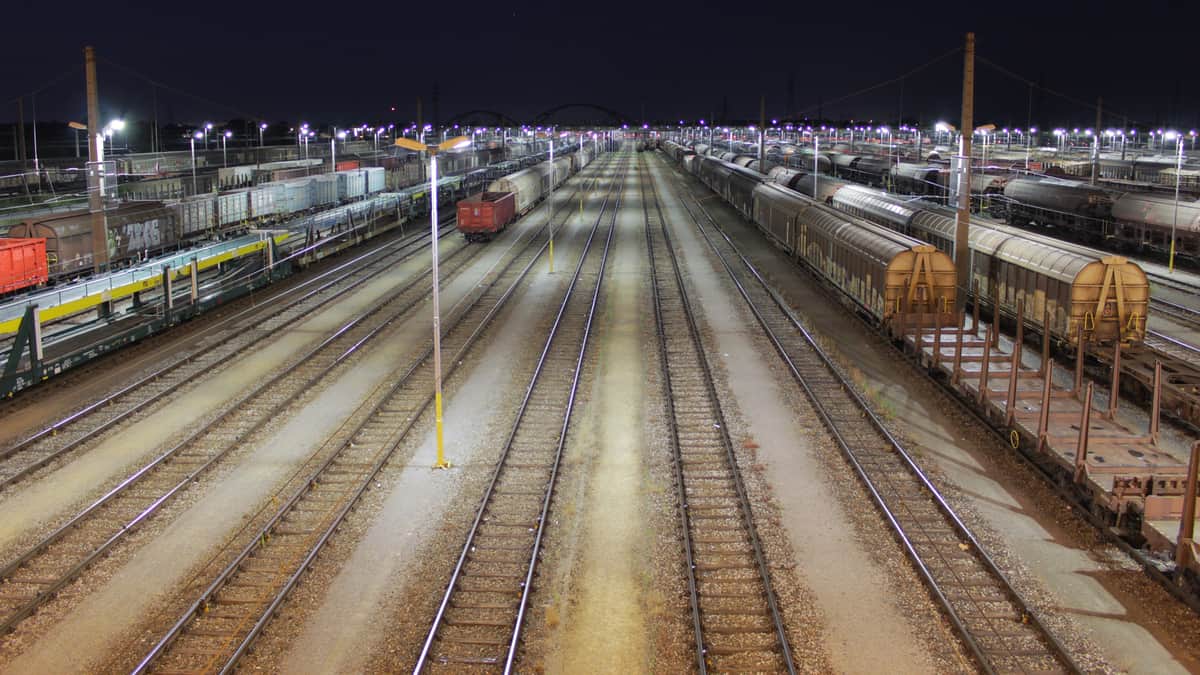U.S. rail traffic tumbled about 21% in April as falling volumes for coal, motor vehicles and parts, and chemicals contributed to a “historic” monthly decline, according to the Association of American Railroads (AAR).
U.S. rail volumes totaled nearly 2.1 million carloads and intermodal units in April, a 21.2% decline from April 2019. Of that, carloads fell 25.2% to 980,535, while intermodal units slipped 17.2% to nearly 1.1 million containers and trailers.
The biggest carload declines in April included coal, which fell 38% amid falling natural gas prices and warming spring weather; motor vehicles and parts, which declined 86.3% as the COVID-19 pandemic dampened consumer spending; and chemicals, which slipped 11.9% amid declining manufacturing production.
AAR Senior Vice President John T. Gray said the 25.2% year-over-year decline in total rail carloads was the “worst decline” for total carloads for any month since AAR’s records began in 1989, while the 17.2% drop in April intermodal loadings was the worst since the summer of 2009.
“Coal and autos were by far the worst-hit commodities in April, but declines spanned the industrial spectrum, hitting finished steel and steel scrap, chemicals, petroleum products, sand and stone, and much else,” Gray said. “We don’t know exactly when it will happen, but our economy — and rail traffic — will rebound. No matter what, the men and women on our nation’s railroads will do their part to keep supply chains moving safely and efficiently as they link our businesses and communities to each other and to the world.”
On a weekly basis, U.S. rail traffic slipped 22.1% to 416,954 carloads and intermodal units for the week that ended on Saturday. Of that, carloads tumbled 29.6% from the same period a year ago, to 189,190 carloads, while intermodal units fell 14.5% to 227,764 containers and trailers.
What will intermodal volumes look like in the second quarter?
All the Class I railroads have reported their first-quarter earnings, and the industry expects the second quarter will be a tough one as the COVID-19 pandemic guts North American rail traffic.
But what’s unclear is when and how rail volumes, including intermodal traffic, will recover. FreightWaves Passport Research recently analyzed how Class I CEOs view intermodal volumes in the second quarter.
“The reluctance of some rails to aggressively grow intermodal has to be balanced against J.B. Hunt’s belief that millions more — 7 million to 11 million more — shipments currently being moved over the highway every year can be converted to intermodal. Add to that what may be a structural realignment of West/East freight flows across the North American continent,” the April 29 FreightWaves Passport preview report said.
Signs of life are starting to appear: Chinese imports seem to be rebounding, according to U.S. customs data, but one question is whether those imports will translate into increased domestic activity, according to a Saturday article by FreightWaves market expert Zach Strickland. For now, the answer is unclear. For starters, these imports could end up in warehouses or they could sit unused until they’re needed. Instead of an indicator of a recovery, the imports could also just be an initial replenishment as Chinese factories, which had slowed down after facing the pandemic, make up for lost time.
Even though social distancing recommendations could be in place for some time across portions of North America, stakeholders are hoping that consumers will want to do their part to improve the economy.
“We anticipate pent-up consumer demand for many items the railroad moves in intermodal containers,” Union Pacific’s Jim Bishop, director of premium, marketing and sales, was reported as saying in a Union Pacific (NYSE: UNP) article about how the railroad is working with its coastal port partners to ensure a fluid supply chain once port volumes rebound. “We’ve all been sitting at home for the last six weeks, looking at the same things. People will want a new couch or end table, and many are ready to throw out their old clothes.”
“Getting back to work or shopping in a pre-virus manner is difficult to predict at this time, with households likely to tiptoe back in rather than making an immediate return to the lives they experienced before,” said Jack Kleinhenz, chief economist for the National Retail Federation (NRF). The group released its monthly economic review Wednesday.
He continued, “As states begin to slowly reopen and assuming the coronavirus does not come back, the economy should begin a process of gradual recovery. My overall impression is that the recovery will have fits and starts among states, regions and cities depending on the severity of the pandemic in their localities.”
NRF estimated that retail sales also fell 8.7% between February and March, while consumer spending slipped 7.6% in the first quarter, which NRF said is the largest drop since the second quarter of 1980.










